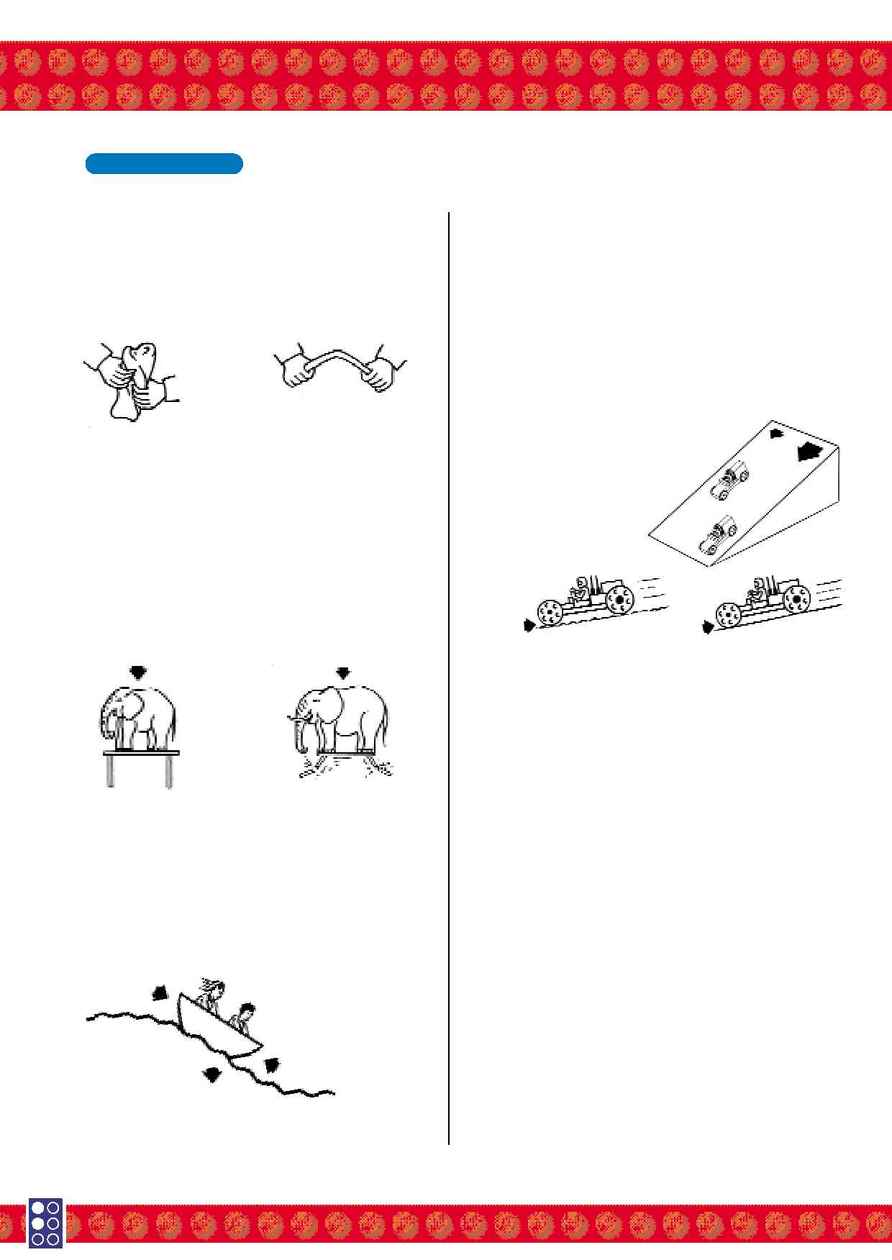
Workshop Programme Teachers' Notes
and Forces can be:
·
Dynamic (pushing, pulling, twisting
and bending as well as those produced by
the wind and by waterfalls).
As well as making objects move, force can also
change the shape of an object. When we play
with plasticine we are using force to twist or
bend it in order to shape it.
The greater the force, the greater its effect
on an object, causing it to change its shape or
to move.
Sometimes objects are subjected to a number
of forces working in different directions.
If you release an object down a slope, its
speed will be affected by several forces such
as pushing, friction, weight/mass, air
resistance, and the angle of the slope. In the
Hands On workshop and in some of the other
activities suggested for the Get Moving
Programme you will experience the following
about movement and forces:
Pushing
The harder you push or pedal, the faster the
object will go.
Friction
The less friction (or amount of surface
contact), the faster the speed will be. The
amount of friction is determined by the type
of surface and the type of tyres used.
·
Type of surface (smooth, slippery, rough
uneven) the smoother the surface, the
faster the speed.
·
Tyres used (narrow, broad, tread)
generally, narrow and smooth tyres will
make the object move faster.
Get Moving
...Movement cont
Twisting
Force
Force
Bending
Weight and height above
water surface
Water and air resistance
Gravity
Friction
Friction
Push
